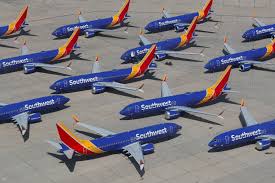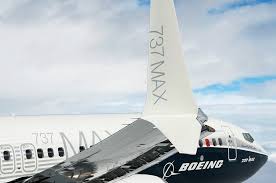The Forkner Indictment for the Tragic Boeing 737 MAX Fraud and Crashes (Part II of III)

Mark Forkner, a former Chief Technical Pilot, was indicted on two counts of fraud involving aircraft parts in interstate commerce and four counts of wire fraud. If convicted, he faces a maximum penalty of 20 years in prison on each count of wire fraud and 10 years in prison on each count of fraud involving aircraft parts in interstate commerce.
Boeing began to develop the 737 MAX in June 2011. In order to operate the 737 MAX, the FAA was required to approve the airplane for commercial use. To make this decision, the FAA had to determine (i) whether the airplane met U.S. federal airworthiness standards; and (ii) what minimum level of pilot training would be required for a pilot to fly the airplane for a U.S.-based airline. These two determinations were made by entirely different groups within the FAA.
The FAA Aircraft Evaluation Group (“AEG”) was principally responsible for determining the minimum level of pilot training required for a pilot to fly the airplane for a U.S.-based airline. To make that determination, the FAA AEG compared the new version of the 737 MAX to a prior version of the airplane to determine what level of training would be required for pilots to operate the new 737 MAX.
The FAA AEG assigned a specific training range from “Level A” through “Level E,” with Level A being the least intensive and costly and Level E being the most intensive and costly. For example, Level B training required computer-based training, which could be completed from any laptop anywhere, and Level D training required flight-simulator training, which required buying multi-million dollar equipment and required pilots to take time from flying to train on costly flight simulator equipment.

The FAA’s evaluation of the new airplane training requirements published in a Flight Standardization Board Report (“FSB Report”). The FSB Report contained relevant information about certain airplane systems and parts that had to be incorporated into manuals and pilot-training materials.
Boeing’s 737 MAX Flight Technical team was responsible for identifying and providing the FAA AEG all relevant information in connection with the publication of the 737 MAX FSB Report. This group was separate from the Boeing group that provided information to the FAA to determine airworthiness.
The 737 MAX was designed to be more fuel efficient than the prior version of the 737 Next Generation. To achieve this fuel efficiency, the 737 MAX included larger engines situated differently under the wings, which altered the aerodynamics of the plane.
The different aerodynamics caused the 737 MAX to pitch up during a flight maneuver called a high-speed, wind-up turn, which involved sharply turning the plane at a high-speed (Mach 0.6 to 0.8) in a corkscrew pattern and outside the limits of how a pilot would fly a 737 MAX during a normal commercial flight. If unaddressed, Boeing’s 737 MAX would not have met FAA airworthiness standards.
To fix this issue, Boeing installed the MCAS as a new part of the flight controls for the 737 MAX. The MCAS caused the 737 MAX nose to pitch down by adjusting the horizontal stabilizer located near the airplane’s tail. The MCAS, as originally designed, would only operate when the airplane was in a high-speed, wind-up turn.
Forkner joined Boeing as a Technical Pilot for the 737 MAX Flight Technical Team in 2012. In 2014, Forkner became Boeing’s Chief Technical Pilot for the 737 MAX.

Forkner knew that he had to provide the FAA with true, accurate and complete information about the 737 MAX and the differences between the 737 MAX and the prior model 737 NG. As part of this, he knew the 737 MAX FSB Report and its differences-training determination was critical. Forkner alo interacted with airline customers and was required to provide true and accurate information so that their pilots received complete information needed to fly the 737 MAX.
Forkner knew that Boeing’s objective was to receive a training determination no greater than Level B so that the 737 MAX would not increase costs for pilot training. If additional training was required, Boeing’s airline customers would be entitled to financial compensation.
In an email sent around December 2014, Forkner stated “If we lose Level B [it] will be thrown squarely on my shoulders. It was Mark, yes Mark! Who cost Boeing tens of millions of dollars!”
During a 2015 briefing of the FAA AEG, Boeing employees told the FAA that MCAS was only needed in high-speed turns of Mach 0.7 to 0.8. Forkner told an FAA employee that MCAS was designed to operate during high-speed, wind-up turns.in August 2016, the FAA AEG issued a provisional determination Level B differences-training determination.
In November 2016, Forkner learned from a simulated test flight that MCAS operated at significantly lower speeds (Mach 0.2) than had previously been told to the FAA. Forkner knew that low speeds around 0.2 Mach were common at low altitude commercial flights in and around takeoff and landing.
After the simulated test flight, Forkner wrote to his colleague, a 737 MAX Flight Technical Pilot (Employee 1)
Forkner: Oh shocker alerT! [sic] / MCAS is now active down to [Mach] .2 / It’s running rampant in the sim on me / at least that’s what [a Boeing simulator engineer] thinks is happening
Employee-1: Oh great, that means we have to update the speed trim description in vol 2
Forkner: so I basically lied to the regulators (unknowingly)
Employee-1: it wasn’t a lie, no one told us that was the case
Forkner contacted a Boeing senior engineer who confirmed to Forkner that MCAS had a broader operational scope (down to Mach 0.2).
Shortly after learning this information, Forkner met with FAA Employee 1 to discuss the flight simulator results, and Forkner did not inform FAA Employee 1 that MCAS could now operate during the entire speed range of the 737 MAX.

Two days later, Forkner and Boeing Employee 1 received a draft of the 737 MAX FSB Report, which included inaccurate information about the MCAS and the training level determination. Forkner provided edits to the Report and deleted any reference to MCAS or to correct the FAA’s incorrect understanding that the MCAS was limited to operation at the Mach 0.7 to 0.8 level. He reiterated this false understanding in subsequent edits in 2017 to the FSB Report. The final FSB Report omitted any reference to the MCAS and adopted a Level B differences training determination.
On October 29, 2018, the Lion Air Flight 610 crashed after takeoff into the Java Sea killing all 189 passengers and crew. Following the crash, the FAA AEG learned that MCAS activated during the flight and may have caused the crash. The FAA AEG learned for the first time about the change to the MCAS, including the information Forkner concealed from the FAA.
Forkner and Boeing Employee 1 continued to mislead others at Boeing and the FAA about their prior knowledge of the change to MCAS.
Five months later, on March 10, 2019, Ethiopian Airlines Flight 302 crashed shortly after takeoff, killing all 157 passengers and crew on board. The FAA AEG learned that MCAS was activated during the flight. Three days later, Boeing’s 737 MAX was grounded.















